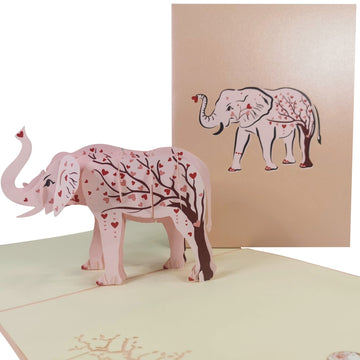Tracing the Origins and Evolution of Mother's Day
Tracing the Origins and Evolution of Mother's Day
The Fascinating History of Mother's Day
Mother's Day stands as one of the most universally celebrated occasions across the globe, though its roots run far deeper than many might imagine. This cherished tradition of honouring mothers and maternal bonds has evolved dramatically over millennia, shaped by various cultures, religions, and social movements.
The concept of celebrating motherhood isn't merely a modern invention - it's a practice that spans thousands of years across numerous civilisations. From the ancient worship of mother goddesses to today's commercial celebration, the journey of Mother's Day reflects humanity's enduring desire to honour maternal figures.
The earliest recorded celebrations of motherhood can be traced back to ancient civilisations, where festivals were held to honour mother goddesses. These celebrations laid the foundation for what would eventually become our modern Mother's Day, though the path to our contemporary celebration was far from straightforward.
What makes the history of Mother's Day particularly fascinating is how it has continuously adapted to reflect society's changing values and needs. Throughout different eras, the celebration has served various purposes:
- Religious Observance: Initially tied to goddess worship and later Christian traditions
- Social Reform: Used as a platform for peace movements and women's rights
- Family Bonding: Evolved into a day for expressing gratitude and strengthening family ties
- Cultural Expression: Adapted differently across various societies and nations
In Britain, the tradition has particularly strong historical roots, intertwining with the Christian observance of Mothering Sunday. This religious celebration, falling on the fourth Sunday of Lent, eventually merged with the American-style Mother's Day to create the celebration we know today.
The remarkable aspect of Mother's Day's history lies in its ability to maintain relevance across centuries while adapting to changing social norms. From ancient spiritual celebrations to Victorian era customs, and finally to our modern observation, the core essence of honouring maternal bonds has remained constant, even as the methods of celebration have evolved.
Understanding this rich history helps us appreciate not just the celebration itself, but also how it reflects our society's continuing recognition of maternal influence and family bonds. As we delve deeper into specific eras and traditions, we'll discover how each period contributed to shaping the Mother's Day we celebrate today.
Ancient Celebrations: The Greeks and Romans
Mother's Day in Ancient Greece
The earliest historical records of honouring mothers trace back to ancient Greece, where the celebration centred around Rhea, known as the Mother of the Gods. The Greeks held elaborate spring festivals to pay tribute to this maternal deity, who was considered the mother of many deities, including Zeus.
These celebrations typically occurred around the vernal equinox and featured:
- Elaborate processions through cities and towns
- Offerings of honey cakes and sweet wines
- Traditional dances performed by young maidens
- Communal feasts celebrating maternal bonds
- Special prayers and rituals at temples dedicated to Rhea
The ancient Greeks believed that honouring Rhea would ensure fertility and the protection of their families. This celebration laid the groundwork for many maternal celebrations that would follow throughout history.
Celebrations Among the Romans
The Romans adapted these Greek traditions and developed their own festival called Hilaria, dedicated to the goddess Cybele, their own version of the Greek mother goddess. This celebration took place during the Ides of March (15 March) and was part of a larger festival known as Magna Mater.
The Roman celebrations were characterised by:
- Three days of elaborate festivities
- Public games and competitions
- Processionals carrying offerings to Cybele's temples
- Gift-giving between family members
- Special privileges granted to slaves, who could criticise their masters freely
The Roman celebration was notably more elaborate than its Greek predecessor, incorporating elements that would later influence Christian celebrations. Interestingly, some historians suggest that these Roman traditions directly influenced the development of Mothering Sunday in Britain centuries later.
The festival was also significant because it marked one of the few times in Roman society when:
- Women were officially honoured and celebrated
- Family bonds were publicly acknowledged
- Religious and social customs merged to create meaningful celebrations
- Communities came together in unified celebration
These ancient celebrations laid the foundation for our modern understanding of Mother's Day, demonstrating how deeply rooted maternal celebration is in Western culture. While contemporary celebrations may look different, they share the same core values of honouring maternal bonds and expressing gratitude for maternal care and nurturing.
Christianity and the Evolution of Mothering Sunday
The transition from ancient maternal celebrations to the Christian tradition of Mothering Sunday represents a fascinating chapter in the history of honouring mothers. In Britain, this evolution was particularly significant, as it gave birth to traditions that would later influence modern Mother's Day celebrations worldwide.
During the 16th century, Mothering Sunday emerged as a distinct Christian observance, traditionally falling on the fourth Sunday of Lent. This timing was not arbitrary - it represented the middle of the Lenten fast and was known as Laetare Sunday in the Christian calendar, a day of respite from the strict fasting rules.
The primary custom involved people returning to their 'mother church' - the main church or cathedral in their area where they were baptised. This practice became known as 'going a-mothering', and it naturally evolved into a day when children, particularly those working as domestic servants, were given leave to visit their mothers.
Several significant traditions emerged during this period:
- Simnel Cakes: Special cakes made with fine flour called 'simnel' became a traditional gift, breaking the Lenten fast
- Gathering Flowers: Children would pick wild flowers on their journey home to present to their mothers
- Church Celebrations: Special services were held honouring the Virgin Mary and motherhood
- Family Reunions: The day became an important occasion for family gatherings
The religious significance of Mothering Sunday was deeply intertwined with the concept of the Church as the spiritual mother of its congregation. The Virgin Mary, often referred to as the Mother of God, played a central role in these celebrations, serving as the ultimate symbol of maternal love and sacrifice.
During the Protestant Reformation, while many Catholic traditions were abandoned, Mothering Sunday remained an important celebration in Britain. This resilience demonstrates how deeply ingrained the custom of honouring mothers had become in British society, transcending purely religious boundaries.
By the late 18th century, the celebration had evolved to incorporate both religious and secular elements. This dual nature helped ensure its survival, even as religious observance began to decline in subsequent centuries. The tradition of children returning home to visit their mothers became increasingly separated from its religious origins, focusing more on the celebration of maternal bonds and family relationships.
The practice of giving small gifts and flowers to mothers became more elaborate during this period, setting the stage for the commercial aspects that would later characterise modern Mother's Day celebrations. However, the essence of Mothering Sunday remained rooted in its spiritual origins, maintaining a distinct character from the American-style Mother's Day that would later emerge.
This Christian evolution of honouring mothers provided a crucial bridge between ancient celebrations and modern observances, establishing many of the traditions we continue to practice today. The enduring legacy of Mothering Sunday demonstrates how religious customs can adapt and evolve while maintaining their core message of gratitude and respect for maternal love and care.
Victorian Era Traditions
The Victorian era marked a significant transformation in how Mother's Day, or Mothering Sunday as it was known then, was celebrated throughout Britain. During this period, the celebration evolved from its religious roots into a more secular, family-oriented occasion that laid the groundwork for modern observances.
During the mid-19th century, Mothering Sunday became increasingly associated with domestic service and the growing working class. Young people, particularly domestic servants, were traditionally given a day off to visit their mothers and attend their 'mother church' - the church where they were baptised.
The Victorians, known for their emphasis on family values and social traditions, embraced this celebration with characteristic enthusiasm. They introduced several customs that would become hallmarks of the occasion:
- Simnel Cake: A light fruit cake with a layer of marzipan in the middle and on top, decorated with 11 marzipan balls representing the disciples (excluding Judas).
- Flowers: The tradition of giving flowers, particularly violets and primroses, became widespread during this period.
- Hand-written Notes: The Victorians popularised the practice of writing heartfelt messages to mothers, a precursor to modern Mother's Day cards.
The industrial revolution played a crucial role in shaping Victorian Mother's Day traditions. As more people moved to cities for work, Mothering Sunday provided a rare opportunity for families to reunite. Railway companies even offered special fares for those travelling home to visit their mothers.
The day also held particular significance for the serving class. Employers would traditionally give their servants the day off to return home, often with:
- A small gift or token of appreciation
- A special cake to share with their family
- Permission to gather wild flowers along their journey home
However, it's worth noting that these celebrations were markedly different from the modern commercial holiday. The Victorian observance maintained stronger ties to its religious origins whilst incorporating new secular traditions that reflected the period's social values.
By the end of the Victorian era, these traditions had become firmly established in British culture, though they would temporarily decline in the early 20th century before experiencing a revival influenced by American Mother's Day celebrations.
The Victorian period's influence on Mother's Day celebrations continues to resonate in modern British observances, particularly in the emphasis on family gatherings and the giving of flowers and cards, demonstrating how this era shaped our contemporary understanding of honouring motherhood.
The Modern Mother's Day: Its Beginnings in America
The modern celebration of Mother's Day as we know it today has its roots firmly planted in American soil, though its journey to becoming an official holiday was anything but straightforward.
The story begins with Anna Jarvis, often regarded as the architect of modern Mother's Day. Following the death of her mother, Anna Maria Reeves Jarvis, in 1905, Anna began a dedicated campaign to honour the sacrifices mothers made for their children. Her mother had been a peace activist who cared for wounded soldiers during the American Civil War, regardless of which side they fought for.
The first official Mother's Day celebration took place on 10 May 1908, when Anna organised simultaneous services at the Andrews Methodist Episcopal Church in Grafton, West Virginia (now the International Mother's Day Shrine), and in Philadelphia. The celebration quickly gained popularity, spreading to other states.
Key developments in the establishment of Mother's Day include:
- In 1912, Anna Jarvis trademarked the phrases "second Sunday in May" and "Mother's Day"
- By 1914, President Woodrow Wilson signed a proclamation designating the second Sunday in May as a national holiday to honour mothers
- The holiday's popularity grew rapidly across the United States during the 1920s
However, the commercialisation of Mother's Day deeply troubled Anna Jarvis. She had envisioned a day of personal celebration and gratitude, not the commercial enterprise it quickly became. She specifically opposed:
- The sale of Mother's Day cards (believing handwritten letters more meaningful)
- Pre-made gifts and flowers (preferring personal, heartfelt gestures)
- The use of the possessive singular "Mother's Day" rather than the plural "Mothers' Day"
Ironically, Jarvis would later spend much of her personal wealth campaigning against the very holiday she helped create, fighting what she saw as its corruption by commercial interests. She died in 1948, bitter about the direction the celebration had taken.
Despite Jarvis's later misgivings, the American version of Mother's Day spread globally, influencing how many cultures celebrate maternal figures. While some nations maintained their traditional celebrations, others adopted or adapted the American model, creating a fascinating blend of old and new traditions.
The American influence on British celebrations has been significant, though the UK maintains strong connections to its earlier Mothering Sunday traditions. Today, while many Britons use the terms "Mother's Day" and "Mothering Sunday" interchangeably, both celebrations have merged to create a unique hybrid that honours mothers while preserving historical connections.
This transformation from a simple day of remembrance to a global phenomenon demonstrates how cultural celebrations can evolve while maintaining their core purpose: expressing gratitude and love for mothers everywhere.
Global Variations of Mother's Day Celebrations
Whilst Mother's Day has become a widely recognised celebration worldwide, its observance varies significantly across different cultures and countries, reflecting unique traditions and customs that make each celebration special.
In the United Kingdom, Mother's Day traditionally falls on the fourth Sunday of Lent, maintaining its historical connection to Mothering Sunday. British celebrations often include:
- Serving traditional Simnel cake
- Presenting flowers, particularly spring blooms like daffodils
- Sharing afternoon tea with family
- Attending church services
European Celebrations showcase fascinating cultural differences:
- France celebrates "Fête des Mères" on the last Sunday in May, with children often preparing elaborate handmade gifts
- Spain honours mothers on the first Sunday in May, combining religious observance with family festivities
- Norway marks Mother's Day on the second Sunday in February, brightening the winter season with warm celebrations
In Asian Countries, the celebrations take on different meanings:
- Japan's "Haha no Hi" falls on the second Sunday in May, where children traditionally present their mothers with red carnations
- India celebrates "Durga Puja", a ten-day festival honouring maternal power
- Thailand marks Mother's Day on 12th August, coinciding with Queen Sirikit's birthday
African Traditions offer unique perspectives:
- Many African nations follow the American date but incorporate local customs
- Ethiopia celebrates mothers during the fall festival of Antrosht with traditional meals and dances
In the Southern Hemisphere, timing differs due to seasonal variations:
- Australia follows the May celebration but emphasises native flowers like chrysanthemums
- Argentina celebrates "Día de la Madre" on the third Sunday of October
These global variations highlight how the universal concept of honouring mothers has been adapted to reflect local cultures whilst maintaining the core values of gratitude and appreciation. Despite different dates and customs, the fundamental purpose remains consistent: celebrating maternal love and sacrifice.
The diversity of these celebrations demonstrates how a single concept can evolve to embrace local traditions whilst maintaining its essential meaning, making Mother's Day a truly global phenomenon with distinctly local flavours.
Personal Reflections: Why Mother's Day Matters
In our fast-paced modern world, Mother's Day stands as a poignant reminder of the timeless value of maternal love and care. This celebration transcends mere commercialism, offering profound significance that resonates across generations and cultures.
Strengthening Family Bonds
Mother's Day provides a dedicated opportunity to pause and reflect on the extraordinary role mothers play in shaping our lives. In the UK, where family dynamics continue to evolve, this annual celebration helps maintain meaningful connections between generations. It's a moment to acknowledge the countless sacrifices, unwavering support, and unconditional love that characterise motherhood.
Cultural Heritage and Identity
The celebration of Mother's Day helps preserve our cultural heritage and reinforces our sense of identity. From the traditional Sunday roast to afternoon tea celebrations, these customs create lasting memories and strengthen family traditions. They provide a bridge between our past and present, connecting us to generations of mothers who came before.
Mental Health and Well-being
Research suggests that celebrating Mother's Day can have positive effects on mental health for both mothers and children. The act of expressing gratitude and appreciation can:
- Reduce stress levels
- Enhance emotional bonds
- Boost overall well-being
- Create positive memories
- Foster stronger family relationships
Social Recognition
In contemporary British society, Mother's Day serves as a vital reminder of the essential role mothers play in:
- Community building
- Family stability
- Child development
- Social cohesion
- Cultural continuity
Beyond Biological Motherhood
Modern celebrations acknowledge that motherhood extends beyond biological connections. Mother's Day honours:
- Adoptive mothers
- Step-mothers
- Foster mothers
- Grandmothers
- Mother figures
- Guardian carers
A Time for Reflection
Mother's Day offers a valuable opportunity for personal reflection. It encourages us to consider:
- The impact of maternal influence in our lives
- The evolution of family relationships
- The importance of expressing appreciation
- The legacy we wish to create for future generations
This annual celebration remains relevant because it reminds us of the fundamental values that sustain our families and communities. In an era where digital communication often replaces face-to-face interaction, Mother's Day provides a crucial moment to reconnect, reflect, and reinforce the bonds that matter most.
Whether through small gestures or grand celebrations, the act of honouring mothers continues to hold profound significance in our society. It's not merely about gifts or cards; it's about acknowledging the invaluable contribution mothers make to our individual lives and to society as a whole.
As we continue to navigate changing social landscapes, Mother's Day stands as a testament to the enduring importance of maternal love and care in shaping our world.
























